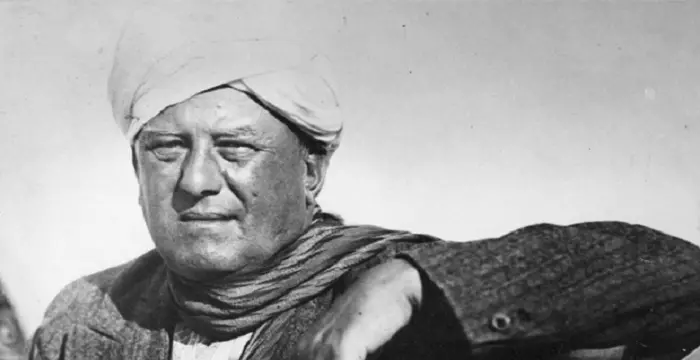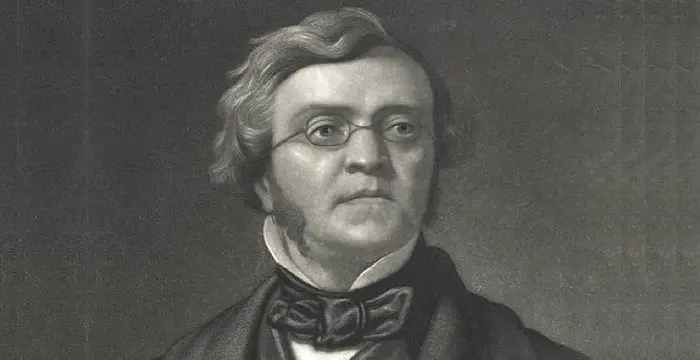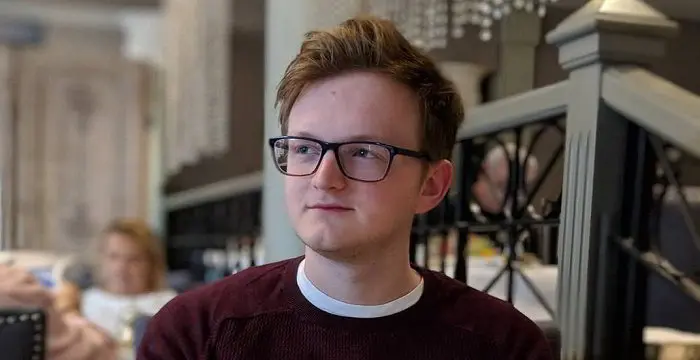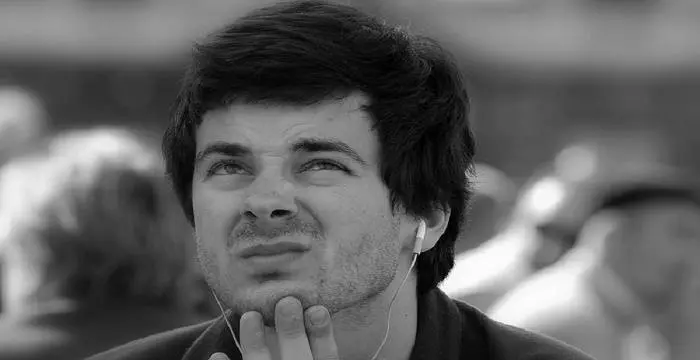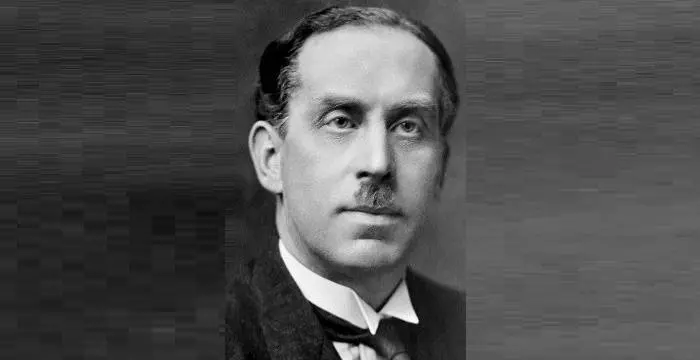
Charles Glover Barkla - Physicists, Family and Family
Charles Glover Barkla's Personal Details
Charles Glover Barkla was a British physicist, who won the Nobel Prize in Physics in 1917
| Information | Detail |
|---|---|
| Birthday | June 7, 1877 |
| Died on | October 23, 1944 |
| Nationality | British |
| Famous | Trinity College, Cambridge, Scientists, Physicists |
| Spouses | Mary Esther Cowell |
| Universities |
|
| Notable Alumnis |
|
| Birth Place | Widnes, Lancashire, England |
| Gender | Male |
| Father | John Martin Barkla |
| Mother | Sarah Glover |
| Sun Sign | Gemini |
| Born in | Widnes, Lancashire, England |
| Famous as | Physicist |
| Died at Age | 67 |
// Famous Physicists
Henry Cavendish
Henry Cavendish was a theoretical chemist and physicist, renowned for discovery of hydrogen and calculation of the mass of earth. To know more about his childhood, profile, timeline and career read on
Walter Kohn
Nobel Laureate Walter Kohn was an Austrian-born American theoretical chemist and physicist. Check out this biography to know about his childhood, life, achievements, works & timeline.
Nikola Tesla
Nikola Tesla was a Serbian-American inventor, best known for his development of alternating current electrical systems. This biography of Nikola Tesla provides detailed information about his childhood, life, achievements, works & timeline.
Charles Glover Barkla's photo
Who is Charles Glover Barkla?
Charles Glover Barkla was a British physicist, who won the Nobel Prize in Physics in 1917 for his discovery of the characteristic Röntgen radiation of the elements. Born at Widnes, Lancashire, he was a brilliant student from the start. He joined the University College, Liverpool, where he studied physics under Sir Oliver Lodge. It is possible that his interest in radiation was developed at this time. Subsequently, after earning his B.Sc. and M.Sc. degree from Liverpool he joined Trinity College, Cambridge and there he started working under J.J. Thompson at the Cavendish Laboratory on velocity of electromagnetic waves. Later he went back to the University of Liverpool from where he earned his D.Sc. Subsequently, he worked for four years at the same institute first as demonstrator, then as Assistant Lecturer and finally as a full Professor. Afterwards, he spent around four more years at the King's College at the University of London and lastly joined the University of Edinburg as the Professor of Natural Philosophy, a position he held until his death. Over the years, he gained considerable reputation as an experimental physicist and earned the Nobel Prize in Physics for his work on X-ray.
// Famous Trinity College, Cambridge
Isaac Newton
Isaac Newton was an English scientist and mathematician, who discovered gravitation and Newtonian Mechanics. Read this biography to find more on his life.
Aleister Crowley
Aleister Crowley was an occultist and ceremonial magician who founded the ethical philosophy of Thelema. This biography of Aleister Crowley provides detailed information about his childhood, life, achievements, works & timeline.
William Makepeace Thackeray
William Thackeray was an English novelist and satirist. Read this brief biography to find more on his life & timeline.
Childhood & Early Years
Charles Glover Barkla was born on 7 June 1877, in Widnes, near Liverpool, England. His father, John Martin Barkla, was a secretary for the Atlas Chemical Company and his mother, Sarah Glover, was the daughter of a watchmaker.
Barkla had his secondary education at Liverpool Institute. In October 1894, he entered University College, Liverpool with a County Council Scholarship and a Bibby Scholarship to study mathematics and physics. Later, he concentrated on physics, studying the subject under Oliver Joseph Lodge, who was famous for his work on electromagnetic radiation.
In 1898, Charles Barkla received his B.Sc. degree with a First Class honors in physics. In the following year, he completed his master’s degree at the same institute. During this period, he also served as first president of the University Physical Society and occasionally, took classes in place of Professor Lodge.
In autumn of 1899, after receiving his master’s degree from University of Liverpool, Barkla joined Trinity College, Cambridge. Here, he started working on the velocity of electromagnetic waves along wires of different widths and materials, under J. J. Thomson, in the Cavendish Laboratory.
In 1900, after one and half years at the Trinity, Barkla shifted to King’s College, Cambridge. His main aim was to take part in its chapel choir. He had a baritone voice, which enthralled the audience and his solos filled up the chapel.
In 1901, his two year scholarship was extended for one more year. The following year, he received a choral scholarship, but he preferred to go back to Liverpool. It is not known if he had actually received a PhD; but it is believed that J.J. Thomson was his doctoral advisor.
Career
In 1902, Charles Glover Barkla returned to the University of Liverpool as Oliver Lodge Fellow and began his work on Röntgen radiation.
In June 1903, he established that secondary radiation emitted by all gases was of the same wavelength as that of the primary beam and that the scattering was proportionate to the mass of the atom.
In 1904, continuing his research on the same subject, Barkla showed that just like light, x-rays are also a form of electromagnetic radiation. His work during this period earned him his degree in Doctor of Science (D. Sc) from the University of Liverpool.
Subsequently in 1905, he was appointed as a demonstrator at the University of Liverpool; but within a short period became an Assistant Lecturer. Sometime in 1906, Barkla, along with his team, used X-ray scattering to determine the number of electrons in the carbon atom.
In 1907, he was made a Physics Lecturer in Advanced Electricity at the same institute. The post was especially created for him. He remained there until 1909.
In 1909, Barkla joined King's College at the University of London as Wheatstone Professor of Physics, succeeding H. A. Wilson. There he continued his work on X-ray and by 1911 began to be regarded as an internationally reputed physicist.
In July 1913, he joined Edinburg University as the Professor of Natural Philosophy, holding the position till his death in 1944. Here he continued working on the same subject and at the same time, took number of administrative initiatives.
Barkla took a prominent part in instituting honors degree courses in pure science at the University of Edinburgh. He especially worked to develop an honors school of physics at the institute. All along he followed his mentor, J.J. Thomson, of Cavendish Laboratory in his style of leadership.
However, from 1916 onwards, he became rather isolated from the scientific community. That was mainly because he cited only his own work and based his theories only on the phenomenon he himself had investigated. His work on ‘J-Phenomenon’ added to this seclusion.
Major Works
Charles Glover Barkla is best known for his work on X-ray scattering. Starting his work in 1903, he established that X-ray scattering occurs when X rays are deflected by the atomic electrons, while they pass through matter. This technique proved to be particularly useful in the study of atomic structures.
Around 1906, he also showed that each element had a unique secondary spectrum, irrespective of its temperature, structure, and chemical composition. Its spectrum was therefore a characteristic property of an atom.
Later, he developed the laws governing the transmission of X-rays through matter, especially the principles of the excitation of secondary X-rays. In addition, he made significant input in X -ray spectroscopy.
Awards & Achievements
He was elected a Fellow of Royal Society of London in 1912 and a Fellow of the Royal Society of Edinburg in 1914.
In 1916, he was appointed as Bakerian Lecturer by the Royal Society of London.
Charles Glover Barkla received the 1917 Nobel Prize for Physics “for his discovery of the characteristic Röntgen radiation of the elements".
In 1917, he was awarded the Hughes Medal "for his researches in connection with X-ray radiation".
Personal Life & Legacy
In 1907, Barkla married Mary Esther Cowell. The couple had two sons and one daughter. The youngest of them was Flight Lieutenant Michael Barkla, who died in action in 1943. Michael was also a brilliant scholar and his untimely death affected Barkla to a great extent.
Charles Glover Barkla died on 23 October 1944 in Edinburgh, Scotland, at the age of 67.
Lunar cater ‘Barkla’, which has a diameter of 42 km and is located at 10.7° S, 67.2° E on the lunar surface, has been named in his honor.
// Famous Scientists
Juliane Koepcke
Juliane Koepcke is a German-Peruvian biologist, who was the lone survivor among the 92 passengers and crew of the ill-fated LANSA Flight 508 that crashed in the Peruvian rainforest on 24 December 1971. Know more about her life in this biography.
Henry Cavendish
Henry Cavendish was a theoretical chemist and physicist, renowned for discovery of hydrogen and calculation of the mass of earth. To know more about his childhood, profile, timeline and career read on
Konstantin Tsiolkovsky
Konstantin Tsiolkovsky was a Russian rocket scientist and a pioneer of astronautics. This biography provides detailed information about his childhood, family, personal life, career, achievements, etc.
Charles Glover Barkla's awards
| Year | Name | Award |
|---|---|---|
Other | ||
| 0 | Nobel Prize in Physics (1917) | |
| 0 | Hughes Medal of the Royal Society | |
Charles Glover Barkla biography timelines
- // 7th Jun 1877Charles Glover Barkla was born on 7 June 1877, in Widnes, near Liverpool, England. His father, John Martin Barkla, was a secretary for the Atlas Chemical Company and his mother, Sarah Glover, was the daughter of a watchmaker.
- // Oct 1894Barkla had his secondary education at Liverpool Institute. In October 1894, he entered University College, Liverpool with a County Council Scholarship and a Bibby Scholarship to study mathematics and physics. Later, he concentrated on physics, studying the subject under Oliver Joseph Lodge, who was famous for his work on electromagnetic radiation.
- // 1898In 1898, Charles Barkla received his B.Sc. degree with a First Class honors in physics. In the following year, he completed his master’s degree at the same institute. During this period, he also served as first president of the University Physical Society and occasionally, took classes in place of Professor Lodge.
- // 1899In autumn of 1899, after receiving his master’s degree from University of Liverpool, Barkla joined Trinity College, Cambridge. Here, he started working on the velocity of electromagnetic waves along wires of different widths and materials, under J. J. Thomson, in the Cavendish Laboratory.
- // 1900In 1900, after one and half years at the Trinity, Barkla shifted to King’s College, Cambridge. His main aim was to take part in its chapel choir. He had a baritone voice, which enthralled the audience and his solos filled up the chapel.
- // 1901In 1901, his two year scholarship was extended for one more year. The following year, he received a choral scholarship, but he preferred to go back to Liverpool. It is not known if he had actually received a PhD; but it is believed that J.J. Thomson was his doctoral advisor.
- // 1902In 1902, Charles Glover Barkla returned to the University of Liverpool as Oliver Lodge Fellow and began his work on Röntgen radiation.
- // 1903Charles Glover Barkla is best known for his work on X-ray scattering. Starting his work in 1903, he established that X-ray scattering occurs when X rays are deflected by the atomic electrons, while they pass through matter. This technique proved to be particularly useful in the study of atomic structures.
- // Jun 1903In June 1903, he established that secondary radiation emitted by all gases was of the same wavelength as that of the primary beam and that the scattering was proportionate to the mass of the atom.
- // 1904In 1904, continuing his research on the same subject, Barkla showed that just like light, x-rays are also a form of electromagnetic radiation. His work during this period earned him his degree in Doctor of Science (D. Sc) from the University of Liverpool.
- // 1905 To 1906Subsequently in 1905, he was appointed as a demonstrator at the University of Liverpool; but within a short period became an Assistant Lecturer. Sometime in 1906, Barkla, along with his team, used X-ray scattering to determine the number of electrons in the carbon atom.
- // 1906Around 1906, he also showed that each element had a unique secondary spectrum, irrespective of its temperature, structure, and chemical composition. Its spectrum was therefore a characteristic property of an atom.
- // 1907 To 1909In 1907, he was made a Physics Lecturer in Advanced Electricity at the same institute. The post was especially created for him. He remained there until 1909.
- // 1907 To 1943In 1907, Barkla married Mary Esther Cowell. The couple had two sons and one daughter. The youngest of them was Flight Lieutenant Michael Barkla, who died in action in 1943. Michael was also a brilliant scholar and his untimely death affected Barkla to a great extent.
- // 1909 To 1911In 1909, Barkla joined King's College at the University of London as Wheatstone Professor of Physics, succeeding H. A. Wilson. There he continued his work on X-ray and by 1911 began to be regarded as an internationally reputed physicist.
- // 1912 To 1914He was elected a Fellow of Royal Society of London in 1912 and a Fellow of the Royal Society of Edinburg in 1914.
- // Jul 1913 To 1944In July 1913, he joined Edinburg University as the Professor of Natural Philosophy, holding the position till his death in 1944. Here he continued working on the same subject and at the same time, took number of administrative initiatives.
- // 1916However, from 1916 onwards, he became rather isolated from the scientific community. That was mainly because he cited only his own work and based his theories only on the phenomenon he himself had investigated. His work on ‘J-Phenomenon’ added to this seclusion.
- // 1916In 1916, he was appointed as Bakerian Lecturer by the Royal Society of London.
- // 1917Charles Glover Barkla received the 1917 Nobel Prize for Physics “for his discovery of the characteristic Röntgen radiation of the elements".
- // 1917In 1917, he was awarded the Hughes Medal "for his researches in connection with X-ray radiation".
- // 23rd Oct 1944Charles Glover Barkla died on 23 October 1944 in Edinburgh, Scotland, at the age of 67.
// Famous British peoples
Wentworth Miller
Wentworth Miller is an American actor and screenwriter who achieved recognition for his role in the TV series ‘Prison Break’.
Sophie Reade
Sophie Victoria Reade is a British model and reality show star. Let’s take a look at her family and personal life, including her age, birthday, boyfriends, and some interesting facts.
Josh Temple
Check out all that you wanted to know about Josh Temple (Slogoman), the famous British YouTube Personality; his birthday, his family and personal life, his girlfriends, fun trivia facts and more.
Yammy Xox
Check out all that you wanted to know about Yammy Xox, the famous British YouTube Personality; her birthday, her family and personal life, her boyfriends, fun trivia facts and more.
Grian
Grian is an English YouTube gamer and social media influencer. Check out this biography to know about his birthday, childhood, family life, achievements and fun facts about him.
Benjamin Atkinson
Benjamin Atkinson is the son of the world-renowned British actor and comedian, Rowan Atkinson. Check out this biography to know about his childhood, family, personal life, including his age, birthday, etc.
Charles Glover Barkla's FAQ
What is Charles Glover Barkla birthday?
Charles Glover Barkla was born at 1877-06-07
When was Charles Glover Barkla died?
Charles Glover Barkla was died at 1944-10-23
Where was Charles Glover Barkla died?
Charles Glover Barkla was died in Edinburgh, Scotland
Which age was Charles Glover Barkla died?
Charles Glover Barkla was died at age 67
Where is Charles Glover Barkla's birth place?
Charles Glover Barkla was born in Widnes, Lancashire, England
What is Charles Glover Barkla nationalities?
Charles Glover Barkla's nationalities is British
Who is Charles Glover Barkla spouses?
Charles Glover Barkla's spouses is Mary Esther Cowell
What was Charles Glover Barkla universities?
Charles Glover Barkla studied at Trinity College, Cambridge
What was Charles Glover Barkla notable alumnis?
Charles Glover Barkla's notable alumnis is Trinity College, Cambridge
Who is Charles Glover Barkla's father?
Charles Glover Barkla's father is John Martin Barkla
Who is Charles Glover Barkla's mother?
Charles Glover Barkla's mother is Sarah Glover
What is Charles Glover Barkla's sun sign?
Charles Glover Barkla is Gemini
How famous is Charles Glover Barkla?
Charles Glover Barkla is famouse as Physicist





